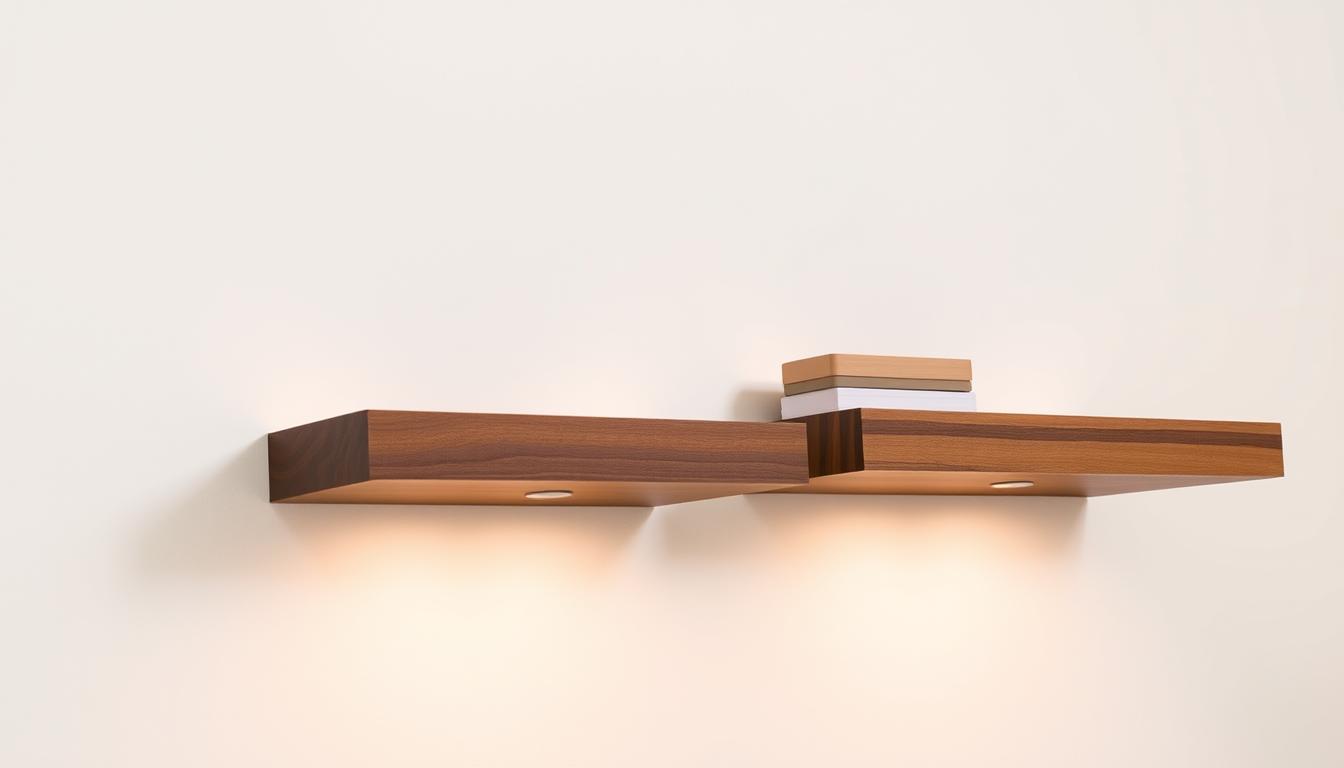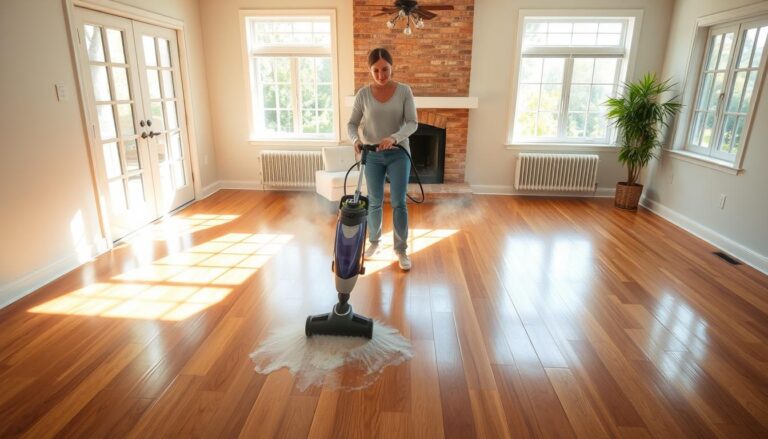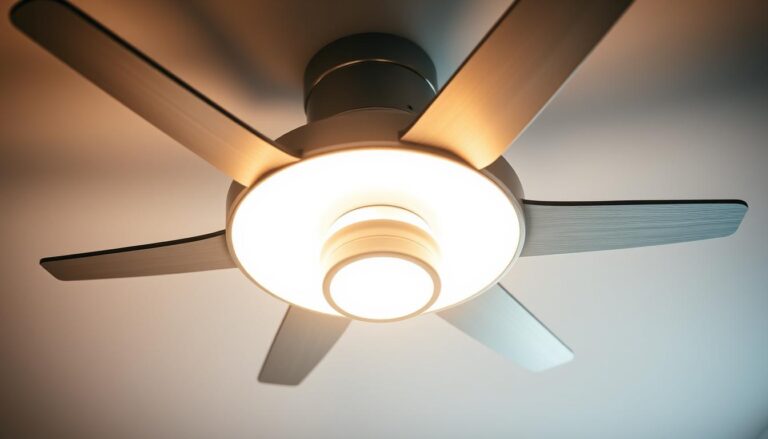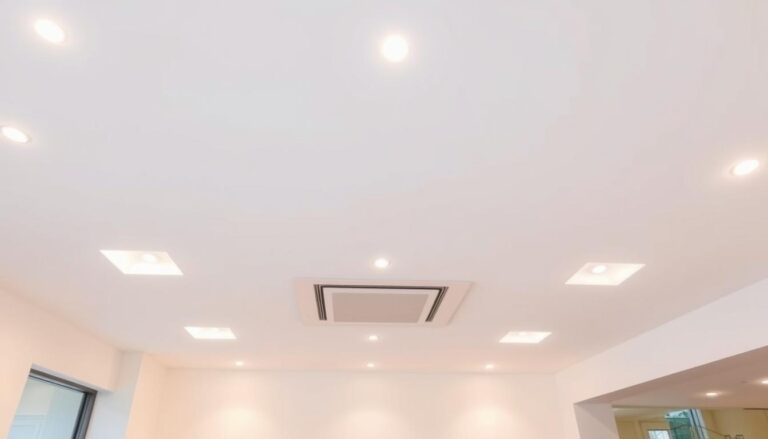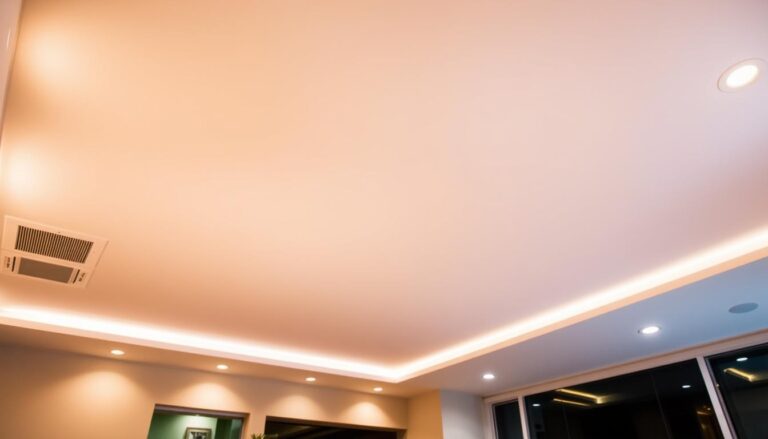Walnut vs Oak Floating Shelves: Which Should You Choose?
Walnut vs Oak Floating Shelves – Are you deciding between these two timeless woods for your next home décor project? The wood you choose can really transform the look and feel of your space.
Floating wall shelves are a favorite for adding both storage and style to modern living rooms. Choosing the right wood floating shelves is a big decision, and many people are stuck between walnut and oak.
Key Takeaways
- Understand the unique characteristics of walnut and oak wood.
- Learn how to choose the right wood for your floating shelves.
- Discover the benefits of using wood floating shelves in your home decor.
- Get insights into the durability and maintenance of walnut and oak shelves.
- Find out which type of wood is best suited for your lifestyle.
The Allure of Wooden Floating Shelves in Modern Homes
Wooden floating shelves are changing how we decorate our homes. Modern floating shelves are key in today’s interior design. They offer both looks and practical use.
The Rising Popularity of Floating Shelves
Floating shelves, especially wood ones, are becoming more popular. They add versatility and make rooms feel more open. An interior designer notes, “Floating shelves give a clean, minimalist vibe. They let homeowners show off items without the mess of old shelves.”
Why Wood Remains the Top Material Choice
Wood is still the top pick for floating shelves because of its natural feel and lasting quality. Best floating shelves are made from quality woods like walnut and oak. These woods bring elegance and durability. The choice of floating shelf materials greatly affects the shelf’s look and use.
Walnut vs Oak Floating Shelves: A Comprehensive Comparison
It’s important to know the differences between walnut and oak floating shelves. Each wood has its own look and feel that can change how your space looks and works.
Origin and Sustainability of Both Woods
Walnut comes from places like the United States, Europe, and Asia. It’s known for being tough and having a deep color. Oak, mainly from North America and Europe, is strong and eco-friendly.
Sustainability Comparison: Both walnut and oak are good choices if they’re harvested right. But walnut might cost more because it grows slower.
Side-by-Side Visual Comparison
Looking at walnut and oak shelves side by side shows big differences. Walnut is darker and richer, while oak is lighter with a more visible grain.
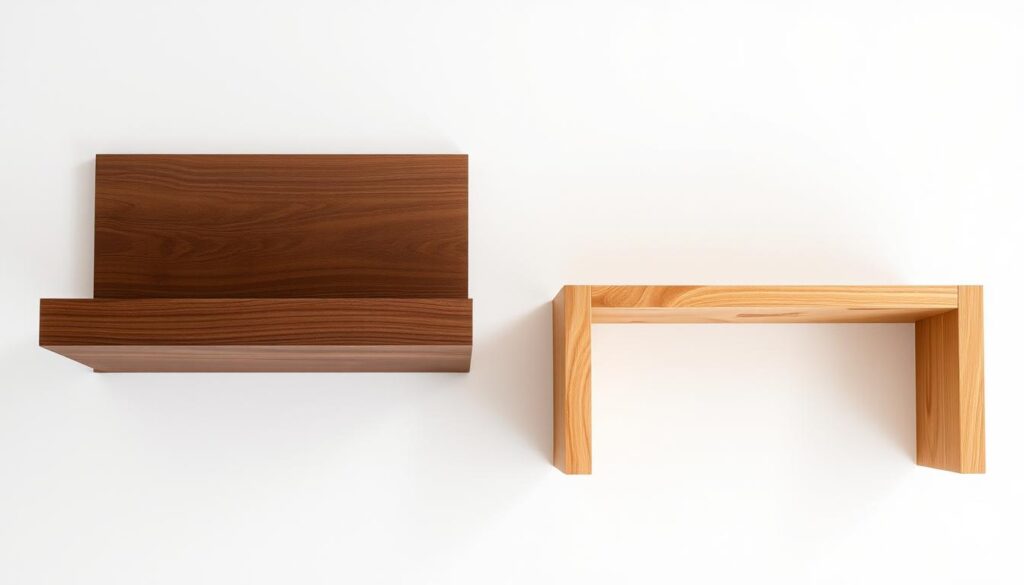
Key Differences at a Glance
| Characteristics | Walnut | Oak |
|---|---|---|
| Color | Dark, rich brown | Light to medium brown |
| Grain Pattern | Straight, with some irregularities | Prominent, rugged grain |
| Durability | High | High |
| Sustainability | Moderate | High |
This table shows the main differences. It helps you pick the right one for your space.
Walnut Floating Shelves: Characteristics and Appeal
Homeowners looking for a sophisticated look should consider walnut floating shelves. They offer elegance and practicality. Walnut wood is known for its dark tones and unique grain patterns, adding luxury to any room. Découvrez par exemple ces walnut floating shelves en bois massif sur Amazon. For a complete overview of walnut floating shelves styles and sizes, check our Ultimate Guide to Walnut Floating Shelves.
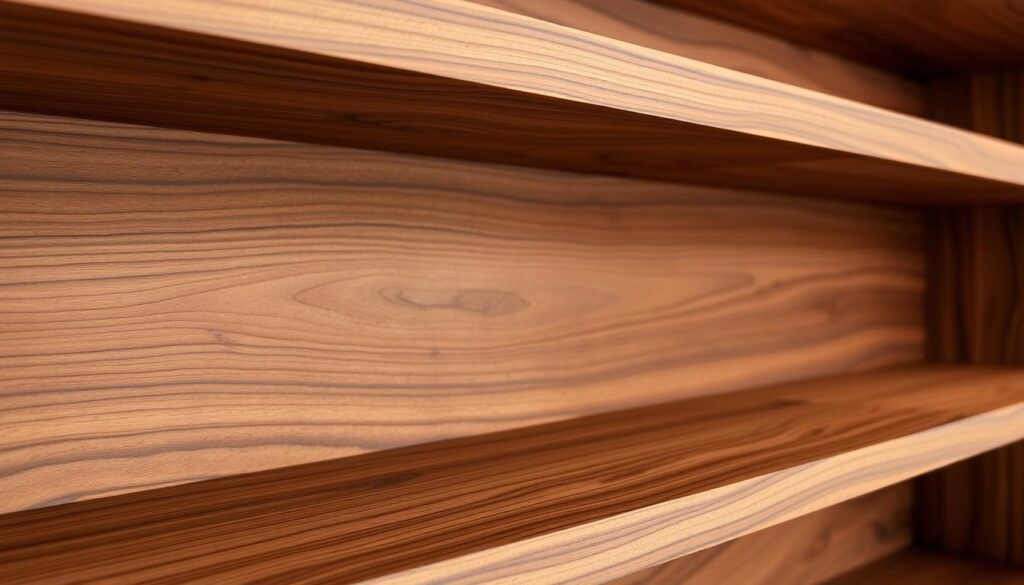
The Distinctive Grain and Color Profile
Walnut floating shelves have a unique grain profile. They feature dark, rich colors and subtle swirling patterns. The heartwood is a deep, rich brown, while the sapwood can be lighter or almost white.
This color variation makes walnut wood very attractive. Over time, it develops a beautiful patina. This enhances its natural beauty and makes it a long-term investment in your home’s decor.
Strength and Durability Factors
Walnut wood is strong and durable, perfect for floating shelves. It resists shrinking and has high density, ensuring stability and longevity. Its hardwood nature means it can handle daily wear and tear, ideal for busy areas.
| Characteristics | Walnut Wood |
|---|---|
| Density | High |
| Durability | High |
| Grain Pattern | Distinctive, Dark |
Weight-Bearing Capacity
When choosing floating shelves, consider their weight-bearing capacity. Walnut shelves can support a lot of weight because of their dense wood. They can hold a lot of decorative items or storage without sagging or breaking.
To ensure they remain sturdy, follow proper installation techniques and use the right mounting hardware. This keeps your walnut floating shelves functional over time.
Oak Floating Shelves: Characteristics and Appeal
Oak floating shelves are loved for their strength and beauty. They are a top pick for both homeowners and designers. Their special look sets them apart from other woods, like walnut, adding a unique touch to any room.
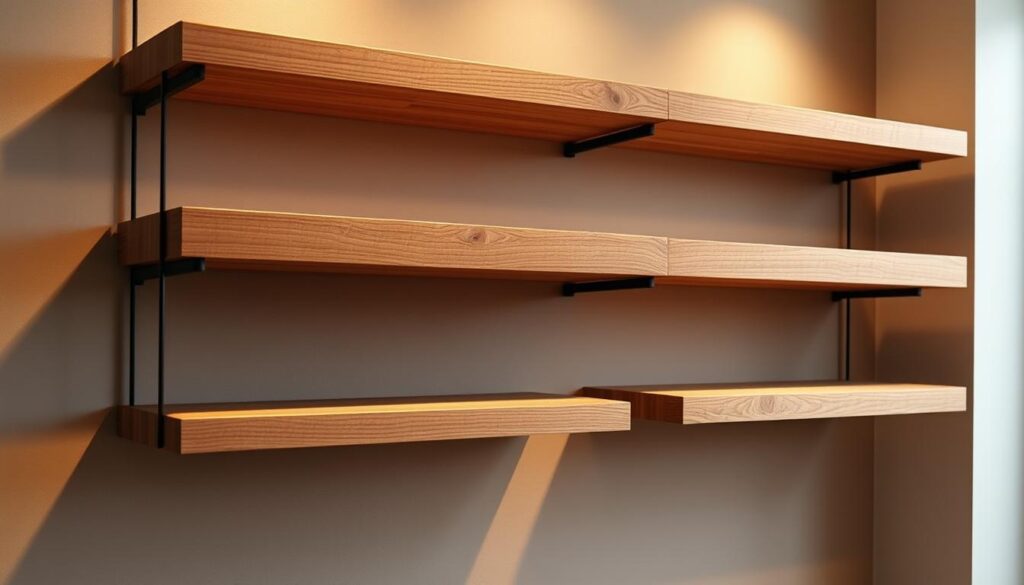
Grain Patterns and Color Variations
Oak floating shelves stand out with their distinctive grain pattern. Oak wood shows off its rings and flecks, creating a unique texture and interest. The color can vary from light beige to dark brown, fitting many decorating styles. Un bon exemple est ce set d’étagères flottantes en chêne blanc disponible sur Amazon.
Hardness and Longevity
Oak is a hardwood that’s tough and lasts long. It scores well on the Janka hardness test, showing it can handle heavy use. With the right care, oak shelves can stay beautiful and useful for years.
Load-Bearing Properties
Oak floating shelves can hold a lot of weight. Their density and strength mean they won’t sag or break under heavy items. This makes them perfect for showing off big decorative pieces or books.
| Characteristics | Oak Floating Shelves | Walnut Floating Shelves |
|---|---|---|
| Grain Pattern | Distinctive, prominent rings and flecks | Straight, fine grain |
| Color | Ranges from light beige to dark brown | Rich, dark brown to almost black |
| Hardness | High on the Janka hardness scale | Very high on the Janka hardness scale |
| Load-Bearing Capacity | High | Very High |
Choosing between oak and walnut floating shelves depends on what you need and like. Oak shelves offer durability, beauty, and versatility. They are a great choice for many homes.
Visual Impact of Walnut vs Oak Floating Shelves
Floating shelves can change a room’s feel, with walnut and oak giving different looks. Think about how each wood will change your space when choosing.
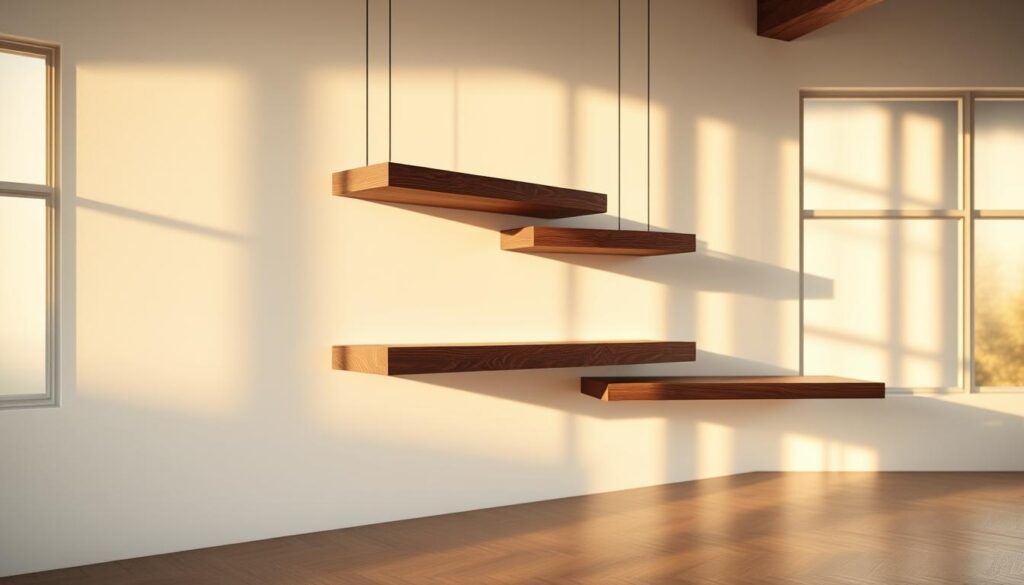
Walnut’s Rich, Sophisticated Aesthetic
Walnut shelves add a luxurious feel to any room. Their dark colors make spaces cozy and intimate, great for living or dining areas.
Complementary Color Schemes
Choose warm neutrals like beige or soft grays with walnut shelves. These colors balance well with the dark tones.
Modern Design Applications
In modern designs, walnut shelves add elegance. They stand out in minimalist spaces, where their rich color is a highlight.
Oak’s Warm, Timeless Presence
Oak shelves bring warmth and brightness to rooms. Their light to medium tones make spaces feel larger and more inviting.
Traditional and Rustic Settings
Oak shelves fit well in traditional and rustic rooms. Their natural look adds warmth and character, pairing well with earthy tones and classic furniture.
Contemporary Oak Applications
In modern spaces, oak shelves create a clean, airy look. They’re perfect for showing off modern decor and can be stained or painted to fit different themes.
Both walnut and oak shelves can change your space in unique ways. Think about the look you want to achieve to pick the right wood for your design.
Walnut vs Oak Floating Shelves Price Comparison
Homeowners often face a choice between walnut and oak floating shelves. This decision is influenced by budget and value. Each wood type has its own price due to different characteristics. Knowing these factors helps you make a choice that fits your budget and goals.
Cost Factors for Walnut Shelving
Walnut floating shelves are pricier than oak ones for several reasons.
- Walnut wood is denser and harder, making it harder to work with and more costly.
- Walnut trees are rarer than oak, which affects the wood’s availability and price.
- The walnut wood’s rich color is highly sought after, adding to its high price.
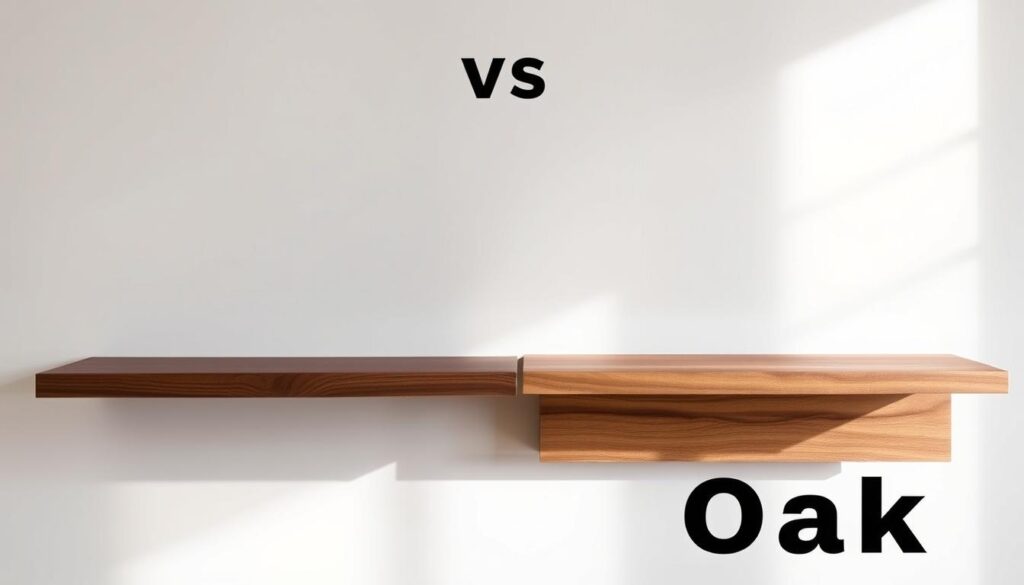
Cost Factors for Oak Shelving
Oak floating shelves are a more budget-friendly option without sacrificing quality.
- Oak wood is easier to find and process, making it cheaper.
- Oak is durable and strong, making it a good long-term investment.
- Oak’s design and finish options vary, offering choices for different budgets.
When looking at walnut and oak shelf prices, think about the cost and value over time. This helps you choose the best option for your home.
Maintenance Tips for Walnut vs Oak Floating Shelves
Proper care and maintenance are key to enjoying your walnut or oak floating shelves for years. Both types of wood need attention to keep their beauty and durability.
Keeping Walnut Shelves in Prime Condition
Walnut floating shelves have a rich, dark color. To keep this look, dust them often with a soft, dry cloth. Stay away from harsh chemicals or abrasive cleaners, as they can harm the finish.
For deeper cleaning, use a wood-specific cleaner and polish. This will help keep the wood’s natural shine.
Preserving Oak Shelves Over Time
Oak floating shelves have a unique grain pattern. They need similar care. Dusting regularly is important, and for stubborn stains, a mild wood cleaner works well.
Oak is more absorbent than walnut, so avoid too much moisture. Applying a wood conditioner now and then can keep the oak’s color and texture looking great.
| Maintenance Task | Walnut Shelves | Oak Shelves |
|---|---|---|
| Regular Dusting | Soft, dry cloth | Soft, dry cloth |
| Deep Cleaning | Wood-specific cleaner | Mild wood cleaner |
| Polishing | Wood polish | Wood conditioner |
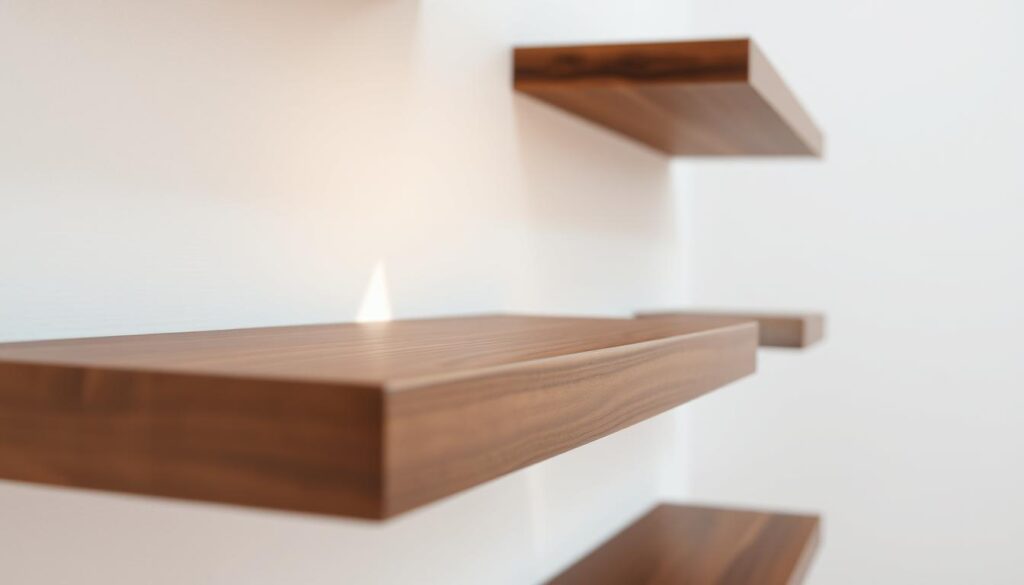
Styling Ideas for Different Rooms
Choosing the right wood for your floating shelves can change how your home looks. Walnut and oak shelves have different looks that can make each room special.
Living Room Styling with Walnut Shelves
Walnut shelves bring elegance to your living room. Their deep color makes the room feel cozy. It’s great for showing off decorations or books.
Pairing walnut shelves with light walls and furniture makes a bold statement. Discover more inspiration in our 10 Stylish Walnut Floating Shelf Ideas. For example, a light gray sofa with walnut shelves is eye-catching.
Here are some tips for using walnut shelves in the living room:
- Display a collection of vintage items or decorative objects
- Organize books and magazines neatly
- Showcase personal treasures or family heirlooms
Bedroom and Dining Room Applications for Oak Shelves
Oak shelves add warmth to bedrooms and dining rooms. Their honey color makes spaces feel cozy. In bedrooms, they’re perfect for personal items or storage. In dining rooms, they highlight fine china or glassware.
Here are some ideas for oak shelves:
- Make a gallery wall with decorative items
- Store linens, towels, or clothes in the bedroom
- Display dining essentials in the dining room
Kitchen and Office Space Solutions
Walnut and oak shelves work well in kitchens and offices. In kitchens, they hold cookbooks, kitchenware, or spices. In offices, they organize papers, display awards, or store supplies.
Focus on both looks and function when styling these shelves. Baskets or bins keep things tidy while adding style.
Installation Considerations for Different Wood Types
Knowing how to mount walnut and oak floating shelves is key for a good install. The wood’s density and grain affect the best way to install it.
Mounting Techniques for Walnut
Walnut is a dense hardwood that needs careful mounting. Use top-notch wall anchors to hold the shelf securely. Vous pouvez utiliser par exemple ces supports invisibles renforcés pour étagères flottantes disponibles sur Amazon. Make sure to find the wall studs for even weight distribution. For a full tutorial, follow our Step-by-Step Guide on Installing Walnut Floating Shelves.
- Use a level to ensure the shelf is perfectly horizontal.
- Drill pilot holes to avoid splitting the wood.
- Use screws that are long enough to secure the shelf to the wall studs.
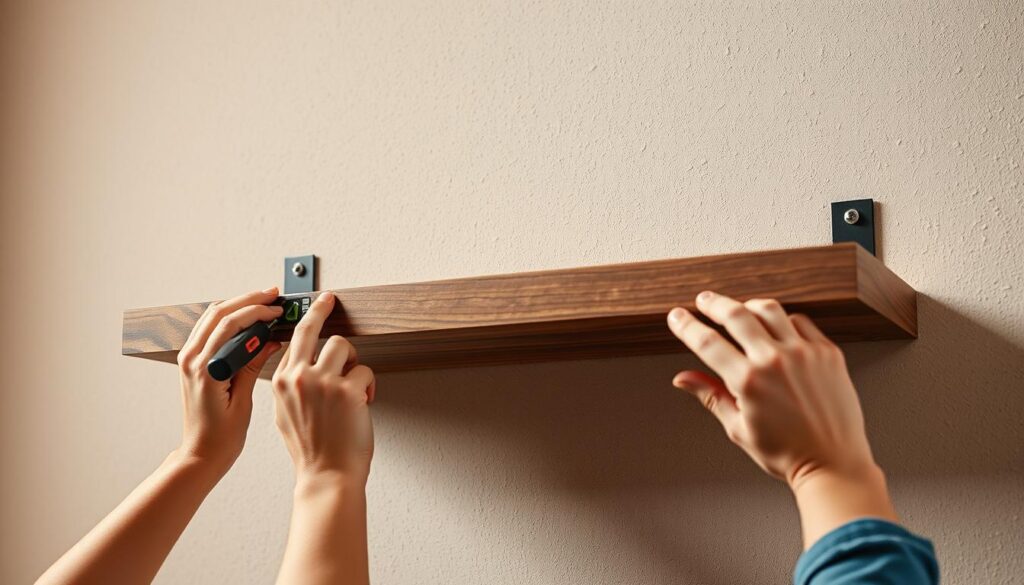
Mounting Techniques for Oak
Oak is another hardwood that needs careful installation. Though less dense than walnut, it still needs strong mounting hardware. Choose heavy-duty brackets for your oak shelves.
- Pre-drill holes for screws to prevent the wood from splitting.
- Use wall anchors for added support, especially if the shelf will hold a significant amount of weight.
- Ensure the shelf is level and securely fastened to the wall studs.
By following these steps, your walnut or oak floating shelves will last for years. You’ll know they’re installed right and securely.
Top Recommended Products and Buying Guide
Homeowners often face a tough choice between walnut and oak floating shelves. Looking at top-rated products can make this decision easier. Both woods have their own benefits, and knowing what the best products offer can guide your choice.
Premium Walnut Floating Shelf Options
Walnut floating shelves are loved for their deep, dark color and smooth grain. If you want to explore the best deals, see our Buying Guide for Walnut Floating Shelves on Amazon. If you’re shopping for options, check our 7 Best Walnut Floating Shelves for Stylish Décor. Here are some top picks:
- Walnut Studio Floating Shelves: These shelves are durable and stylish, great for modern living rooms.
- Dark Walnut Floating Shelves: Their rich color adds elegance to any room.
Quality Oak Floating Shelf Selections
Oak floating shelves have a lighter, more classic look. Here are some top choices:
- White Oak Floating Shelves: They offer a timeless look with a modern twist, fitting many decor styles.
- Red Oak Floating Shelves: Their warm tones create a cozy feel in bedrooms or living rooms.
| Feature | Walnut Floating Shelves | Oak Floating Shelves |
|---|---|---|
| Color | Dark, rich brown | Light to medium brown |
| Grain | Fine, straight grain | Prominent, varied grain |
| Durability | High | High |
When deciding between walnut and oak floating shelves, think about the look you want in your space. Also, consider how durable and easy to maintain each wood is.
Conclusion: Making Your Final Decision
Choosing between walnut and oak floating shelves can be tough. Each wood type has its own unique qualities. Think about your style, the room’s look, and your budget when picking the right floating wall shelves.
A shelf comparison shows walnut shelves have a rich, elegant look. Oak shelves bring a warm, classic feel. Both are strong and can make your home more valuable. It’s important to look at the grain, color, and how easy they are to clean.
To see the differences, here’s a comparison:
In the end, it’s about what you need and like. Whether you choose walnut’s luxury or oak’s timeless beauty, walnut vs oak floating shelves will improve your space. Take your time to decide what fits your life and home best.
FAQ
1. Are Walnut vs Oak Floating Shelves better for modern homes?
Yes, both woods work beautifully in modern interiors. Walnut offers a darker, more luxurious look, while oak provides warmth and brightness. Choosing between Walnut vs Oak Floating Shelves depends on whether you want a sleek, contemporary vibe or a cozy, timeless feel.
2. How durable are Walnut vs Oak Floating Shelves compared to other woods?
Walnut vs Oak Floating Shelves are among the strongest options available. Walnut is dense and resistant to warping, while oak is highly durable and less prone to scratches. Both outperform many softer woods in terms of longevity.
3. Which is more affordable: Walnut vs Oak Floating Shelves?
Generally, oak is more budget-friendly than walnut. Walnut vs Oak Floating Shelves differ in price due to walnut’s rarity and rich aesthetic, while oak is easier to source and offers a wide range of finishes.
4. What are the main differences between walnut and oak floating shelves?
Walnut shelves feature rich, dark tones and smooth grain, while oak shelves have lighter shades with a more visible grain pattern. These differences affect both style and atmosphere.
5. Which type of wood is more sustainable for floating shelves?
Both are sustainable when harvested responsibly. Oak is widely available from managed forests, while walnut takes longer to grow, making it slightly less abundant.
6. How do I choose between Walnut vs Oak Floating Shelves for my home?
Think about your décor style and functionality. Walnut is perfect for luxurious, modern spaces, while oak fits rustic, traditional, or Scandinavian themes.
7. Are Walnut vs Oak Floating Shelves easy to maintain?
Yes. Dust them regularly and avoid harsh chemicals. Walnut benefits from oil-based polish, while oak responds well to wax-based treatments.
8. Can I install Walnut vs Oak Floating Shelves in any room?
Absolutely. Both woods can be used in living rooms, bedrooms, kitchens, or offices. Just be cautious with humidity in kitchens and bathrooms.
9. What are the weight-bearing capacities of Walnut vs Oak Floating Shelves?
Both are strong hardwoods. Walnut shelves typically support heavier loads due to their density, while oak shelves also provide excellent strength when installed properly.
10. How do the grain patterns of Walnut vs Oak Floating Shelves affect their appearance?
Walnut’s grain is subtle and elegant, ideal for modern minimalism. Oak’s grain is more pronounced, adding texture and charm to rustic or traditional spaces.

